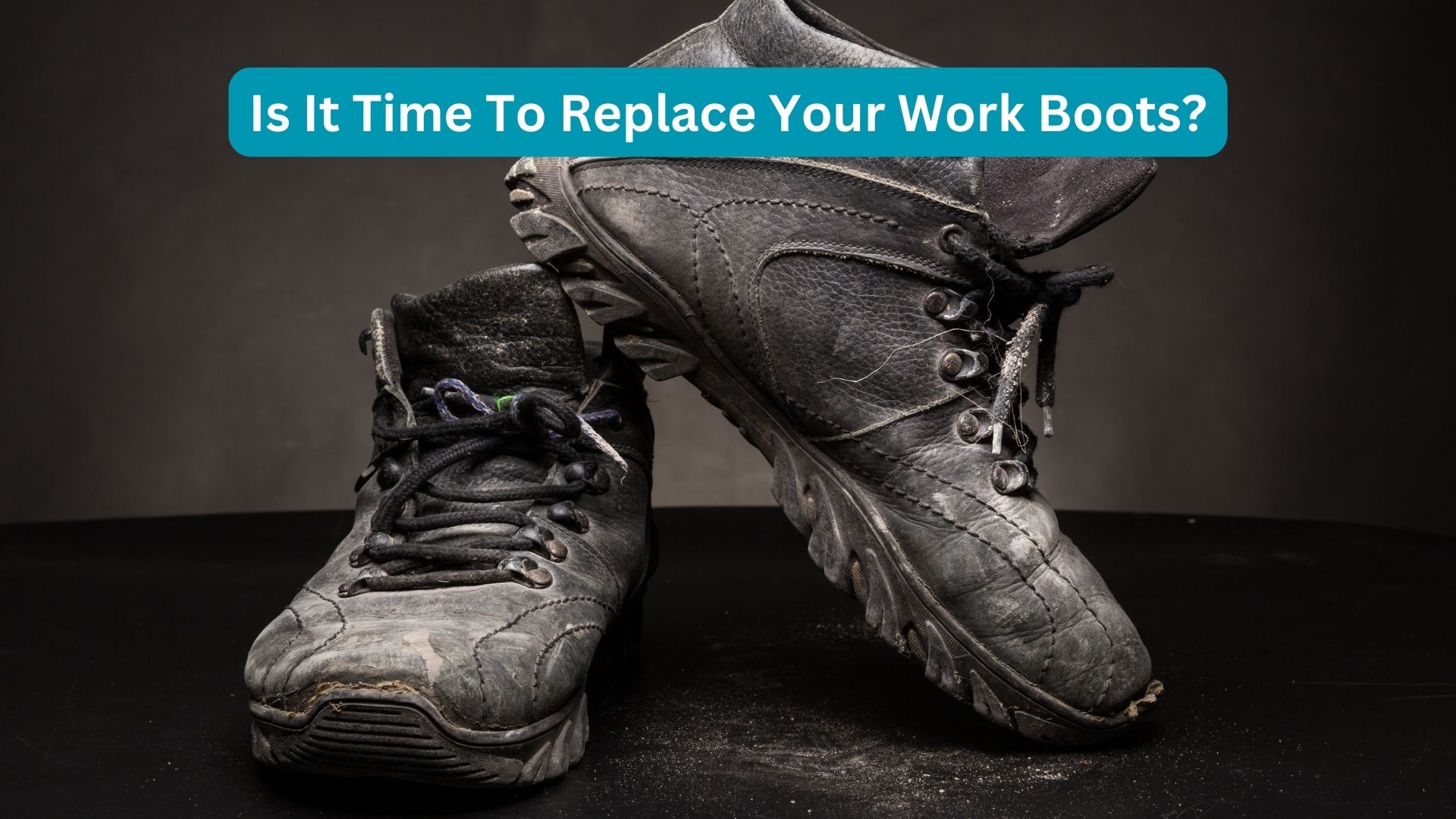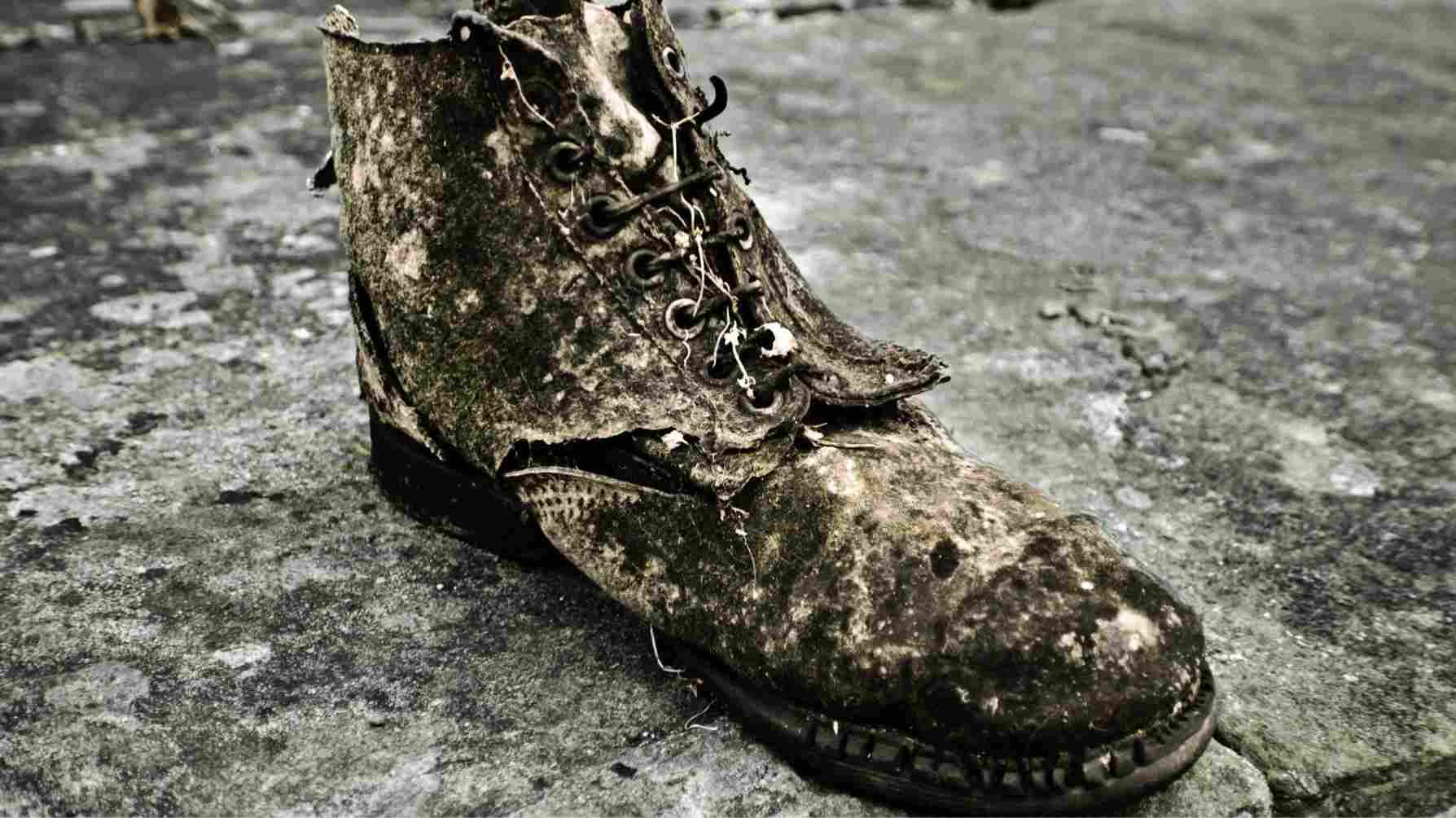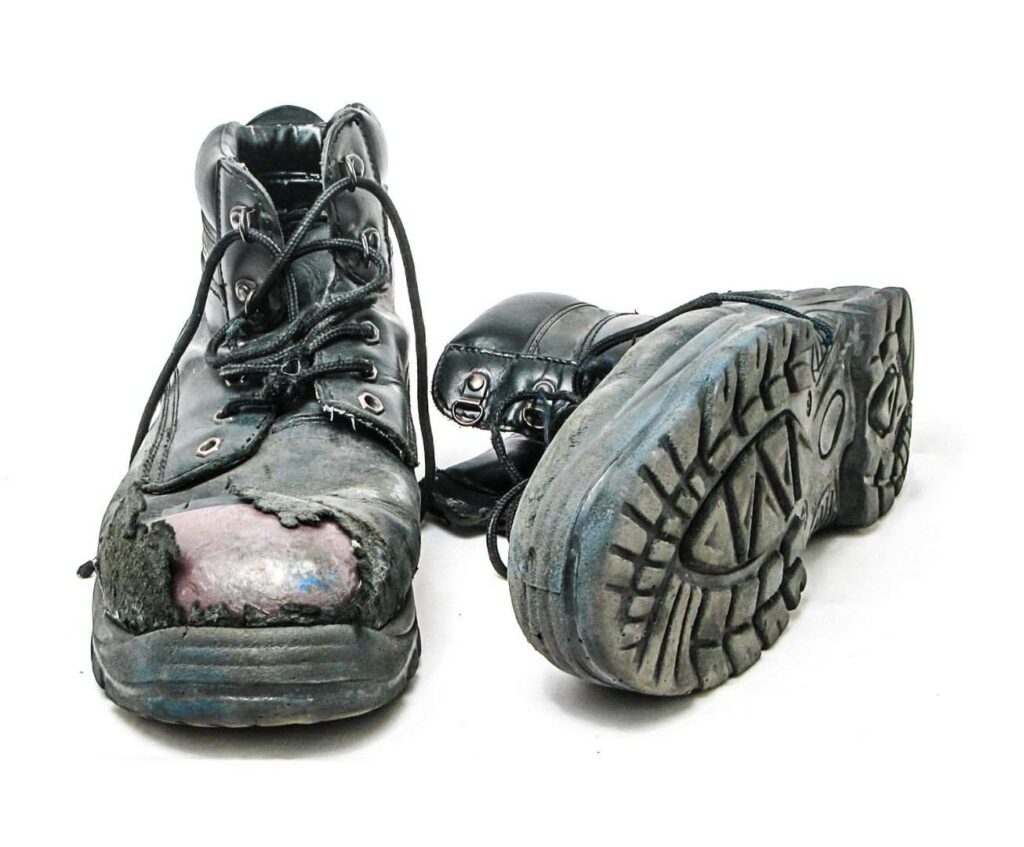Last Updated on August 1, 2024 by Sarah Jaffe

Your work boots have been with you through thick and thin. They’ve protected your feet in the toughest of conditions and have helped you get the job done. But, as with all good things, their time may be coming to an end. How do you know when it’s time to say goodbye and replace your trusty work boots?
Here are 5 signs to look out for a damaged toe, pressed insoles, cuts and cracks, worn-down traction, and failing the flexibility test. If you notice any of these signs, it might be time to bid farewell to your old work boots and invest in a new pair.
5 Signs Of Worn Out Work Boots

Here are five signs that your work boots are worn out:
1. Damaged Toe
A clear indication of worn-out work boots manifests as a damaged toe. To shield the toes from impacts, work boots often feature reinforced toe caps crafted from steel or composite materials.
However, continuous use and exposure to harsh conditions can gradually wear down or damage these materials. Dents, cracks, or deformities in the toe area is a telltale sign that the protective toe cap has been compromised. As a result, the boots’ safety and effectiveness are compromised, necessitating their replacement.
2. Pressed Insoles
Another evident symptom of worn-out work boots manifests as insoles that have been pressed or flattened. With regular use, insoles may lose their shape and thickness due to compression and lose their function as cushioning and support.
As a consequence, the comfort and support they once provided diminish, rendering them less effective at absorbing impacts and delivering adequate arch support.
3. Cuts and Cracks
Another key indicator of worn-out work boots can be found in cuts and cracks on their exterior. Given the exposure to diverse workplace hazards and rugged environments, work boots can develop cuts, tears, or cracks on their surfaces. These damages undermine the boots’ structural integrity, compromising their ability to offer protection and support.
Additionally, such cuts and cracks can permit moisture to permeate the boots, resulting in discomfort and potential foot-related issues.
4. Worn Down Traction
The traction provided by work boots plays an indispensable role in maintaining stability and averting slips or falls, particularly in hazardous work settings. Over time, the outsole of the boots can wear down due to continuous friction and exposure to rough surfaces.
When the tread pattern on the outsole has significantly eroded or become shallow, it serves as an indication that the boots have lost their grip and traction. This jeopardizes your safety and augments the risk of accidents.
5. The Flexibility Test
To test the flexibility of your work boots, you can perform a simple flexibility test. Hold the boot firmly by the heel and toe, then bend it back and forth. Worn-out work boots tend to lose their flexibility, becoming stiff and rigid.
If your boots are difficult to bend or make cracking or creaking sounds while you perform the test, it indicates that the materials have become worn and stiff over time.
How Often Should You Replace Work Boots?

The frequency of replacing work boots depends on various factors such as the frequency of use, type of work, and the quality of the boots. As a rough estimate, work boots should be replaced every 6-12 months for regular use.
If you work in a harsh environment or use the boots for heavy-duty work, they may need to be replaced more frequently. It is also important to inspect the boots regularly for signs of wear and tear, such as holes, worn-out soles, or loose stitching, and change them if necessary to avoid any safety hazards.
What To Do With Worn-Out Boots?

Given below are five alternatives for dealing with worn-out work boots:
- Donate them to a charity or organization that collects used footwear for individuals in need, giving someone else a chance to benefit from their use.
- Repurpose them as garden boots by adding a waterproof liner and using them for gardening or yard work, extending their lifespan in a new role.
- Recycle them at a designated recycling facility or through a shoe recycling program, ensuring that the materials are reused to create new products and minimize waste.
- Transform them into unique planters by adding soil and plants to the boots, adding a creative touch to your garden or porch while giving the boots a decorative purpose.
- Lastly, trade them in for a discount on new boots. Some companies offer discounts when you trade in your old boots for new ones, reducing the cost of your next purchase.
Final Verdict
To wrap up, it’s imperative to replace your work boots when they show signs of wear and tear. Not only will it ensure your safety and comfort, but it will also prevent long-term foot problems that can hinder your work performance.
Remember, your feet are your foundation, take care of them and they will take care of you.

Sarah is the brains behind BootsNerd. Sarah Jaffe is a writer, editor, and boots lover based in Brooklyn, New York. She has done BA (Hons) in Footwear Design from De Montfort University, UK. She loves to write about boots and has a particular interest in vintage and sustainable fashion.